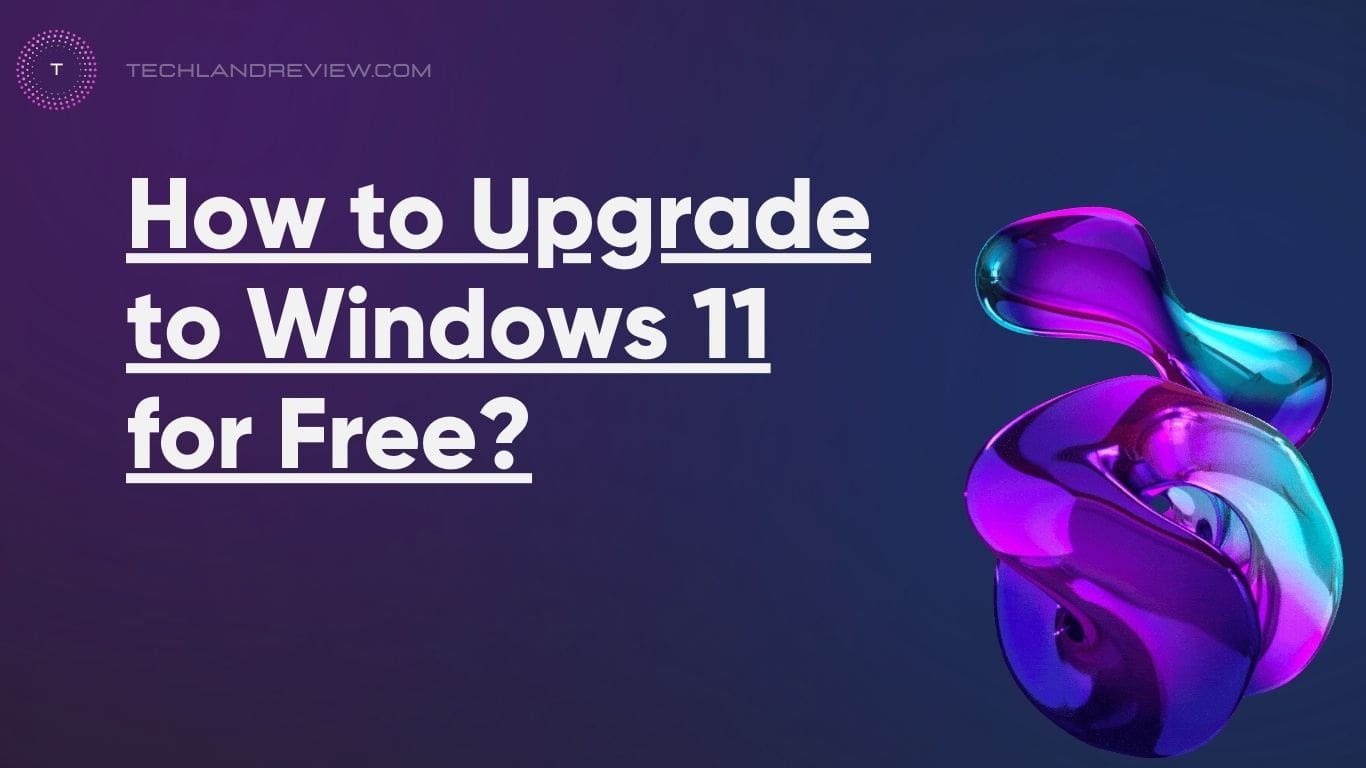How to Upgrade to Windows 11 for Free?
The evolution of Windows over the years has seen remarkable improvements, especially with the emergence of Windows 11. This new version, which Microsoft claims to be the most user-friendly and…
The evolution of Windows over the years has seen remarkable improvements, especially with the emergence of Windows 11. This new version, which Microsoft claims to be the most user-friendly and efficient iteration to date, is loaded with a plethora of features designed to boost productivity and enhance user experience. If you’re contemplating how to upgrade to Windows 11, this comprehensive guide has got you covered.
Go to start > settings > update & security > windows update and select check for updates. If the upgrade is available, then proceed it, download and install it.
Windows 11 Compatibility
Before you start with the upgrade process, it’s important to ensure your computer meets the system requirements for Windows 11. These requirements can be found on the official Microsoft website and include factors like processor speed, memory, storage, system firmware, graphics card, and more. A tool named PC Health Check available on Microsoft’s website can help you determine if your PC meets the minimum requirements.
Creating a Backup
Before you initiate the upgrade, it’s recommended to backup all your essential data. Although the upgrade process is designed to keep your files and applications intact, it’s always better to be safe than sorry. Use a reliable cloud storage service or an external hard drive to back up your data.
Windows Update
The most straightforward way to upgrade to Windows 11 is via Windows Update. If your PC meets the system requirements, Microsoft will automatically offer you a free upgrade. Follow the steps below to check for updates manually:
- Open Settings: Click on the Start button, then select the gear icon for Settings.
- Go to Windows Update: In the Settings window, select ‘Update & Security.’
- Check for Updates: Click on ‘Check for updates.’ If Windows 11 is available, it will show up here.
Remember, it’s possible that Windows 11 may not be available immediately after its release due to phased rollouts. So, keep checking regularly.
Using Microsoft’s Installation Assistant
In case Windows Update doesn’t show the option for the Windows 11 upgrade, you can use Microsoft’s Installation Assistant. Here’s how to proceed:
- Download the Installation Assistant: Visit Microsoft’s official website and download the Installation Assistant.
- Install and Open the Tool: Once downloaded, install the tool and open it. You’ll see the option to ‘Upgrade now’ if your PC is compatible.
- Follow the Prompts: Click on ‘Upgrade now’ and follow the prompts to initiate the upgrade.
Clean Installation using a USB Drive
For those who prefer starting fresh, a clean installation of Windows 11 is possible. It involves erasing everything on your computer and installing Windows 11. Here’s how you can do this:
- Download Windows 11: You need to download the Windows 11 ISO file from Microsoft’s official website.
- Create a Bootable USB Drive: Use tools like Rufus or Microsoft’s Media Creation Tool to create a bootable USB drive using the ISO file you downloaded.
- Boot from USB: Restart your computer and enter the BIOS settings to set your PC to boot from the USB drive. The key to access the BIOS settings differs from manufacturer to manufacturer, so you may need to look it up for your specific model.
- Follow the Setup Process: Once booted from the USB, you’ll see the Windows 11 setup screen. Follow the prompts, choose to erase your drive when asked, and proceed with the installation.
Remember, this process will erase everything on your PC, so ensure you have a backup of your data.
Post-Installation Setup
After the upgrade or installation, it’s time to get your system up and running. Follow the prompts to complete the initial setup. You’ll need to select a region and language, sign in to your Microsoft account, set up a password, and choose privacy settings. Once these steps are done, your Windows 11 PC will be ready to use.
Upgrading to Windows 11 is a fairly straightforward process, provided your PC meets the requirements. Whether you choose to update through Windows Update, use the Installation Assistant, or opt for a clean install, the new features and refined interface of Windows 11 await you. Remember to back up your data beforehand to avoid any potential data loss. Enjoy exploring the new features and the enhanced user experience that Windows 11 offers.
Frequently Asked Questions
Can all PCs upgrade to Windows 11?
Not all PCs can upgrade to Windows 11. There are specific system requirements, such as processor, RAM, and storage, that a PC must meet to be eligible for the upgrade. You can check these requirements on Microsoft’s official website.
How can I check if my PC is eligible for the Windows 11 upgrade?
You can use the PC Health Check tool provided by Microsoft to check if your PC is eligible for the Windows 11 upgrade. Alternatively, you can manually compare your system specifications with the requirements listed on Microsoft’s website.
Is the Windows 11 upgrade free?
Yes, similar to previous Windows upgrades, Microsoft provides a free upgrade to Windows 11 for eligible Windows 10 PCs.
Why isn’t the Windows 11 upgrade showing up in my Windows Update?
The rollout of Windows 11 is phased, so it might not immediately show up in your Windows Update. If your PC is eligible, the upgrade will eventually be available.
How do I perform a clean installation of Windows 11?
You can perform a clean installation of Windows 11 by downloading the Windows 11 ISO file from Microsoft’s website and creating a bootable USB drive. Restart your PC and boot from the USB drive, then follow the prompts to install Windows 11. Be aware that this process will erase all existing data on your PC, so back up your files before proceeding.
What should I do if the upgrade to Windows 11 fails?
If the upgrade fails, ensure your PC meets the system requirements and that you have a stable internet connection. If you’re still having issues, contact Microsoft Support or consider seeking assistance from a professional.
Will my files and applications be safe during the upgrade?
The upgrade process is designed to keep your files and applications intact. However, it’s recommended to back up your important files and data beforehand to avoid any risk of data loss.
What are some of the improvements in Windows 11 compared to Windows 10?
Windows 11 comes with a more refined and modern interface, improved performance, better multitasking capabilities, new ways to connect with others, and a host of other features designed to enhance productivity and user experience.


